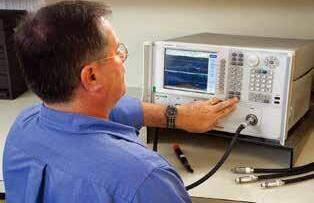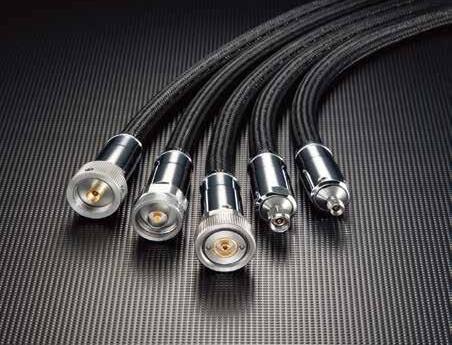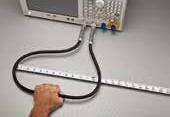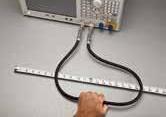SilverLine®-VNA
(18,26.5and40GHz)
Vector Network Analyzer Test Cables :
ï Vector Network Analyzer Measurements
ï Laboratory Use
ï Research and Development
SilverLine®-VNA is a precision test cable with excellent loss, VSWR and phase/flexure stability. Protected by a torque and crush resistant armor, SilverLine®-VNA test cables exhibit extraordinary ruggedness comparable to OEM supplied test cables but at a fraction of the cost , making them the ideal choice for daily use in factory and lab applications .
The braided PET outer jacket makes SilverLine®-VNA easy to handle, non-conductive and improves flexibility when compared to extruded jackets . The chrome plated metal back shell maintains the integrity of the cable to connector interface and allows for easy handling.


Features & Benefits:
• 18, 26.5 and 40 GHz options
• Low loss 40 GHz cables now available!
• Phase, Loss & VSWR stable
• High flex life
ï Torque and crush resistant stainless steel armor
ï Chrome plated strain relief back shells
• ROHS Compliant



Connectors:
ï Instrument grade
• Passivated stainless steel
ï Captive center contacts
Attachment Method:
Solder/clamp/crimp. Protective metal back shell
*Requires mating connections to be clean and within mechanical specifications. Calibrated torque wrench required.
**RF stability and flex life are in accordance with the flex test method example. Data is for cables 4ftorshorter.Longercablesmayexhibitdifferentstabilitycharacteristics.Acablewillexhibitsome instability when new. A very brief period of use is required to alleviate cable component stresses from manufacturing after which the cable will “settle” and maintain the values stated
Care and Handling Guidelines:
While armored, 26.5 & 40 GHz cables are sensitive microwave instruments. Small, flexible cables can easily be forced beyond the recommended minimum bend radius. This will likely degrade or destroy the RF performance. All flexible cables have a limited flex life. Develop procedures that limit flexing. 2.4 and 1.85mm interfaces are delicate. Keep them meticulously clean and the center contacts concentric within the outer contact. Use a microscope to examine if necessary. DO NOT mate connectors that are dirty, suspected of being damaged or outside concentric tolerances. Connectors must be aligned when mating. Misalignment could damage the interfaces and voids the warranty. Test equipment makers publish extensive use and handling procedures on their web sites that cover these and related topics.
ALWAYS:
-Inspect interfaces before every mate. Clean if needed.
-Gently start the coupling nut and fully thread with fingers first.
-Hand tighten, but if a calibrated torque wrench is used 8 lbs max.
-Limit use to experienced technicians.
-Cap connectors and store cables separately in a protective container.
-Keep a spare pair of cables ready, just in case.
NEVER:
-Force the cable to bend beyond the recommended minimum radius.
-Force two connectors. If any resistance is felt STOP and examine.
-Mate to another series.
-Mate connectors that are not aligned and concentric.
-Put foreign or dirty objects into the interface.
Warranty:
Product to be free from workmanship and materials defects and to meet stated data sheet performance for a period of 90 days. Excludes cable or connector interface damage from misuse, abuse, mishandling or mis-mating outside the data sheet recommendations. Warranty claims are subject to factory analysis and may include analysis charges depending on findings.
Ordering Information:
